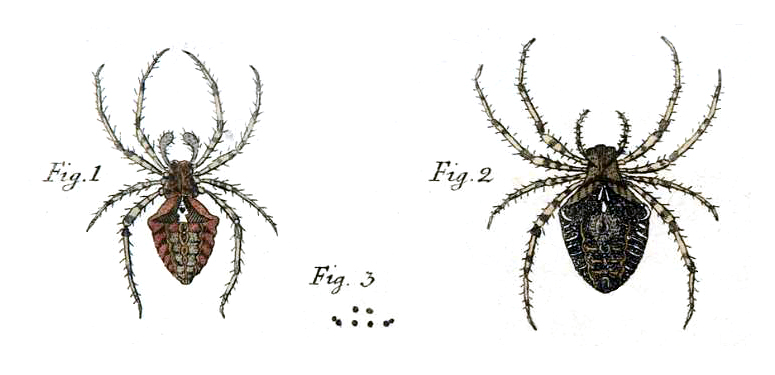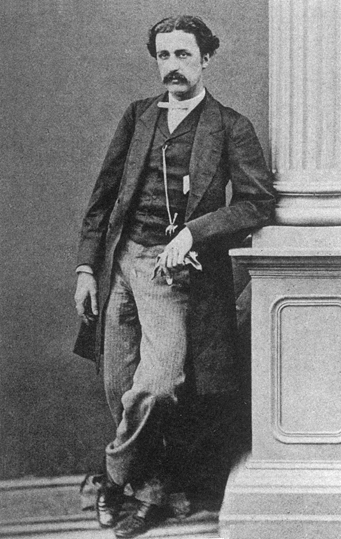|
Odontopera
''Odontopera'' is a genus of moths in the family Geometridae described by Stephens in 1831. '' Aethiopodes'' is sometimes also included here. Selected species *'' Odontopera albiguttulata'' Bastelberger, 1909 *''Odontopera bidentata The scalloped hazel (''Odontopera bidentata'') is a moth of the family Geometridae. The species was first described by Carl Alexander Clerck in 1759. Distribution It is a common species of northern and central Europe including the British Is ...'' ( Clerck, 1759) *'' Odontopera bilinearia'' ( Swinhoe, 1890) *'' Odontopera insulata'' Bastelberger, 1909 References * Ennominae {{Ennominae-stub ... [...More Info...] [...Related Items...] OR: [Wikipedia] [Google] [Baidu] |
Odontopera Bidentata
The scalloped hazel (''Odontopera bidentata'') is a moth of the family Geometridae. The species was first described by Carl Alexander Clerck in 1759. Distribution It is a common species of northern and central Europe including the British Isles and Russia to the Urals. It is also widespread through Siberia and the Amur-Ussuri region to the Kuril Islands and Japan. Description The wingspan is 46–50 mm. The forewing ground colour is usually grey brown. The same coloured midfield is bordered by blackish crossbars that are often partly white. At the wing edge below the apex are two characteristic, protruding teeth. The scientific name of the species is derived from the Latin language ''bi'' = "twice" and ''dentatus'' = "toothed". The outer dark crossline of the forewings continues on the hindwings. All wings have a ring-shaped dark discal spots. The thorax is hairy. This is a very variable species with the wing colour ranging from whitish through buff and brown to black, s ... [...More Info...] [...Related Items...] OR: [Wikipedia] [Google] [Baidu] |
Odontopera Bilinearia
''Odontopera bilinearia'' is a moth of the family Geometridae first described by Charles Swinhoe in 1890. It is found in Asia, including Taiwan, China and Bhutan Bhutan (; dz, འབྲུག་ཡུལ་, Druk Yul ), officially the Kingdom of Bhutan,), is a landlocked country in South Asia. It is situated in the Eastern Himalayas, between China in the north and India in the south. A mountainous .... Subspecies *''Odontopera bilinearia bilinearia'' *''Odontopera bilinearia coryphodes'' (Wehrli, 1940) *''Odontopera bilinearia nephela'' (Wehrli, 1940) *''Odontopera bilinearia subarida'' Inoue, 1986 (Taiwan) References Moths described in 1890 Ennominae {{Ennominae-stub ... [...More Info...] [...Related Items...] OR: [Wikipedia] [Google] [Baidu] |
Odontopera Arida
''Odontopera'' is a genus of moths in the family Geometridae described by Stephens in 1831. '' Aethiopodes'' is sometimes also included here. Selected species *'' Odontopera albiguttulata'' Bastelberger, 1909 *''Odontopera bidentata The scalloped hazel (''Odontopera bidentata'') is a moth of the family Geometridae. The species was first described by Carl Alexander Clerck in 1759. Distribution It is a common species of northern and central Europe including the British Is ...'' ( Clerck, 1759) *'' Odontopera bilinearia'' ( Swinhoe, 1890) *'' Odontopera insulata'' Bastelberger, 1909 References * Ennominae {{Ennominae-stub ... [...More Info...] [...Related Items...] OR: [Wikipedia] [Google] [Baidu] |
Odontopera Insulata
''Odontopera insulata'' is a moth of the family Geometridae first described by Max Bastelberger in 1909. It is found in Taiwan. The wingspan The wingspan (or just span) of a bird or an airplane is the distance from one wingtip to the other wingtip. For example, the Boeing 777–200 has a wingspan of , and a wandering albatross (''Diomedea exulans'') caught in 1965 had a wingspan of ... is about 38 mm. Subspecies *''Odontopera insulata insulata'' *''Odontopera insulata tsekua'' (Wehrli, 1931) References Moths described in 1909 Ennominae {{Ennominae-stub ... [...More Info...] [...Related Items...] OR: [Wikipedia] [Google] [Baidu] |
Odontopera Albiguttulata
''Odontopera albiguttulata'' is a moth of the family Geometridae first described by Max Bastelberger in 1909. It is found in Taiwan. The wingspan The wingspan (or just span) of a bird or an airplane is the distance from one wingtip to the other wingtip. For example, the Boeing 777–200 has a wingspan of , and a wandering albatross (''Diomedea exulans'') caught in 1965 had a wingspan of ... is 39–44 mm. References Moths described in 1909 Ennominae {{Ennominae-stub ... [...More Info...] [...Related Items...] OR: [Wikipedia] [Google] [Baidu] |
Aethiopodes
''Aethiopodes'' is a genus in the geometer moth family (Geometridae). Sometimes included in ''Odontopera'', other authors treat it as distinct. If valid, it is a small genus with just about 10 species from southern Africa Africa is the world's second-largest and second-most populous continent, after Asia in both cases. At about 30.3 million km2 (11.7 million square miles) including adjacent islands, it covers 6% of Earth's total surface area ....Pitkin & Jenkins (2004), Krüger (2005) Species include: * '' Aethiopodes indecoraria'' Walker, 1866 * '' Aethiopodes perplexata'' * '' Aethiopodes saxeticola'' Krüger, 2005 * '' Aethiopodes staudei'' Footnotes References * (2005): New species of geometrid moths from Lesotho (Lepidoptera: Geometroidea: Geometridae). ''Annals of the Transvaal Museum'' 42: 19-45HTML abstract* (2004)Butterflies and Moths of the World, Generic Names and their Type-species&ndash''Parectropis'' Version of 2004-NOV-05. Retrieved 2 ... [...More Info...] [...Related Items...] OR: [Wikipedia] [Google] [Baidu] |
Buttia
''Buttia'' is a monotypic In biology, a monotypic taxon is a taxonomic group (taxon) that contains only one immediately subordinate taxon. A monotypic species is one that does not include subspecies or smaller, infraspecific taxa. In the case of genera, the term "unispec ... moth genus in the family Geometridae described by Warren in 1904. Its only species, ''Buttia noctuodes'', was described by the same author in the same year. References * Ennominae Monotypic moth genera {{Ennominae-stub ... [...More Info...] [...Related Items...] OR: [Wikipedia] [Google] [Baidu] |
Moth
Moths are a paraphyletic group of insects that includes all members of the order Lepidoptera that are not butterflies, with moths making up the vast majority of the order. There are thought to be approximately 160,000 species of moth, many of which have yet to be described. Most species of moth are nocturnal, but there are also crepuscular and diurnal species. Differences between butterflies and moths While the butterflies form a monophyletic group, the moths, comprising the rest of the Lepidoptera, do not. Many attempts have been made to group the superfamilies of the Lepidoptera into natural groups, most of which fail because one of the two groups is not monophyletic: Microlepidoptera and Macrolepidoptera, Heterocera and Rhopalocera, Jugatae and Frenatae, Monotrysia and Ditrysia.Scoble, MJ 1995. The Lepidoptera: Form, function and diversity. Oxford, UK: Oxford University Press; 404 p. Although the rules for distinguishing moths from butterflies are not well establishe ... [...More Info...] [...Related Items...] OR: [Wikipedia] [Google] [Baidu] |
Geometridae
The geometer moths are moths belonging to the family Geometridae of the insect order Lepidoptera, the moths and butterflies. Their scientific name derives from the Ancient Greek ''geo'' γεω (derivative form of or "the earth"), and ''metron'' "measure" in reference to the way their larvae, or inchworms, appear to measure the earth as they move along in a looping fashion. A very large family, it has around 23,000 species of moths described, and over 1400 species from six subfamilies indigenous to North America alone. A well-known member is the peppered moth, ''Biston betularia'', which has been subject of numerous studies in population genetics. Several other geometer moths are notorious pests. Adults Many geometrids have slender abdomens and broad wings which are usually held flat with the hindwings visible. As such, they appear rather butterfly-like, but in most respects they are typical moths; the majority fly at night, they possess a frenulum to link the wings, and th ... [...More Info...] [...Related Items...] OR: [Wikipedia] [Google] [Baidu] |
Max Bastelberger
Max Joseph Bastelberger (19 March 1851, Würzburg, Bavaria – 1 January 1916, Munich, Bavaria) was a German medical doctor and entomologist. He was specialized on geometrid moths and described 351 new taxa.* Anonymus: ''† Max Bastelberger.'' Mitteilungen der Münchner Entomologischen Gesellschaft, 7(1-5): 3-7, München 191PDF Species named in his honor include * ''Alcis bastelbergeri'' * ''Entephria bastelbergeri'' * ''Dysphania bastelbergeri'' * ''Eupithecia bastelbergeri ''Eupithecia bastelbergeri'' is a moth in the family Geometridae. It is found in Kazakhstan, Kyrghyzstan, Russia, Iran and Turkey Turkey ( tr, Türkiye ), officially the Republic of Türkiye ( tr, Türkiye Cumhuriyeti, links=no ), is a ...'' * '' Zamarada bastelbergeri'' Publications * Max Bastelberger, 1905. Beschreibung neuer und Besprechung weniger bekannter Geometriden aus meiner Sammlung. - Entomologische Zeitschrift 19(14 (1. Suppl.)):77. * Max Bastelberger, 1907. Neue afrikanische Geome ... [...More Info...] [...Related Items...] OR: [Wikipedia] [Google] [Baidu] |
Carl Alexander Clerck
Carl Alexander Clerck (1709 – 22 July 1765) was a Sweden, Swedish entomologist and arachnology, arachnologist. Clerck came from a family in the petty Swedish nobility, nobility and entered the University of Uppsala in 1726. Little is known of his studies; although a contemporary of Carl Linnaeus, Linnaeus, it is unknown whether he had any contact with him during his time in Uppsala. His limited means forced him to leave university early and enter into government service, later ending up working in the administration of the City of Stockholm. His interest in natural history appears to have come at a more mature age, influenced by a lecture of Linnaeus he attended in Stockholm in 1739. In the following years he collected and categorized many spiders, published together with more general observations on the morphology and behaviour of spiders, in his ''Svenska Spindlar'' ("Swedish spiders", 1757, also known by its Latin subtitle, ''Aranei Suecici''). He also started the publication ... [...More Info...] [...Related Items...] OR: [Wikipedia] [Google] [Baidu] |
Robert Swinhoe
Robert Swinhoe FRS (1 September 1836 – 28 October 1877) was an English diplomat and naturalist who worked as a Consul in Formosa. He catalogued many Southeast Asian birds, and several, such as Swinhoe's pheasant, are named after him. Biography Swinhoe was born in Calcutta where his father, who came from a Northumberland family, was a lawyer. There is no clear record of the date of his arrival in England, but it is known he attended the University of London, and in 1854 joined the China consular corps. He was stationed to the remote port of Amoy, some 300 miles to the northeast of Hong Kong, in 1855. While at this port he not only mastered the Chinese language (both official Mandarin and the local Amoy dialect), but also initiated a detailed and authoritative understanding of the ornithology of eastern China. In March, 1856, Swinhoe made an "adventurous" visit to the camphor districts of northwestern Formosa on board a lorcha, a hybrid vessel utilizing a European hull an ... [...More Info...] [...Related Items...] OR: [Wikipedia] [Google] [Baidu] |

_caterpillar_-2.jpg)
.png)

